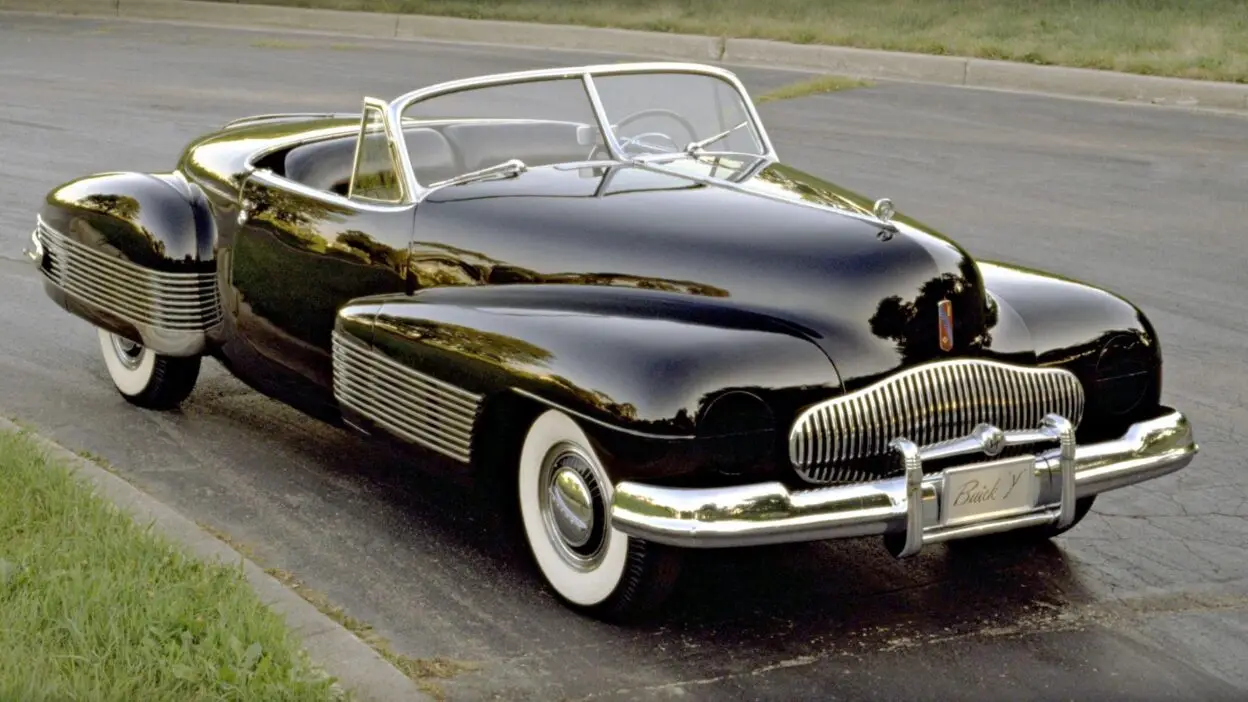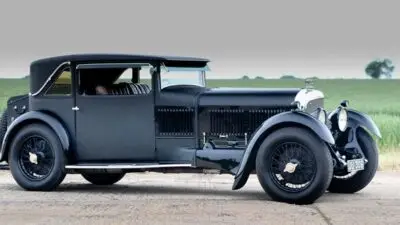The world of car design is filled with incredible ideas that never reach the roads we drive on. From sleek sports cars to innovative city vehicles, many forgotten concept cars showcased amazing creativity and engineering that challenged mainstream automotive thinking.

Many of these shelved prototypes were fully functional vehicles that came tantalizingly close to production before being canceled due to economic factors, changing market demands, or corporate direction shifts. Some, like the Ford Indigo with its Formula 1-inspired design or the elegant Jaguar XJ13 meant to compete at Le Mans, remain powerful symbols of what might have been in automotive history.
1) Ford Indigo

The Ford Indigo was a striking concept car unveiled in 1996 that resembled an Indy-style race car designed for street use. With its open-wheel design and low-slung profile, it captured the imagination of automotive enthusiasts around the world.
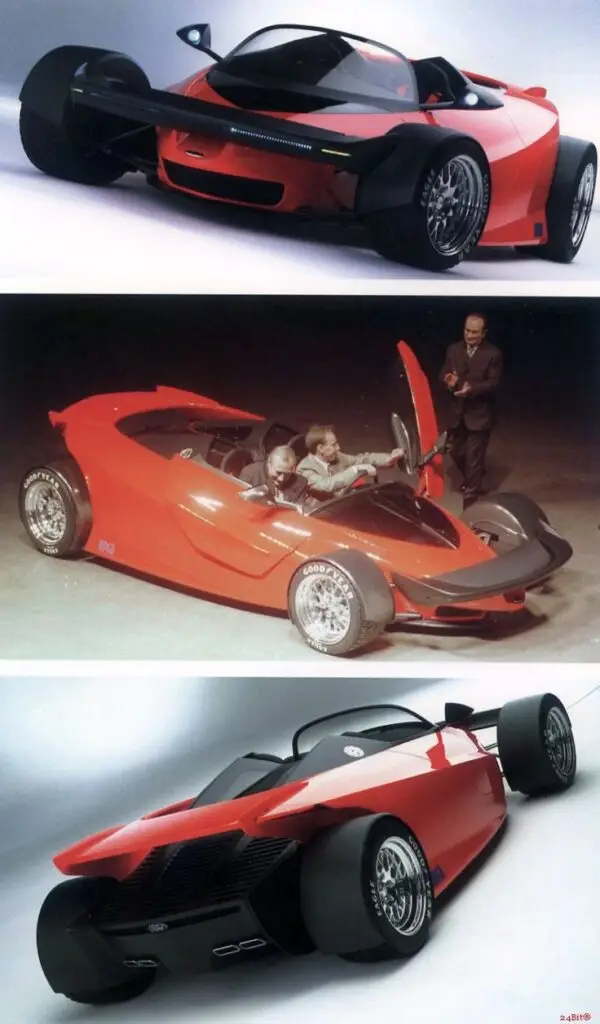
At the heart of the Indigo was a powerful 6.0-liter V-12 engine producing an impressive 435 horsepower. This street-legal performance car was built with one clear purpose: pure speed.
The concept was a collaboration between Ford and motorcycle manufacturer Reynard, demonstrating Ford’s willingness to push boundaries in automotive design during the 1990s.
What made the Indigo particularly interesting was that it wasn’t just a styling exercise. Ford actually built two prototypes – one functioning model with the V-12 engine and one non-running show car for display purposes.
Despite its promising design and technical specifications, the tragedy of the Indigo is that it never reached production. It joined the ranks of other Ford prototypes that could have revolutionized the automotive landscape but remained confined to concept status.
The Indigo stands as a testament to Ford’s innovative spirit and willingness to explore radical designs, even if they never made it to consumer garages.
2) Jaguar XJ13

The Jaguar XJ13 stands as one of the most captivating prototype racing cars never to fulfill its destiny. Developed in the mid-1960s under Jaguar Engineering Director William Heynes, this vehicle was specifically created to compete at Le Mans.
Despite its impressive engineering, the XJ13 never had the chance to prove itself on the racetrack. Only one example was ever produced, making it exceptionally rare in automotive history.
The heart of the XJ13 was its genuine Jaguar prototype V-12 engine. These engines were extremely limited, with only six ever built for this purpose.
The XJ13’s distinctive mid-engine design and aerodynamic body represented cutting-edge thinking for its era. Its sleek lines and purposeful stance continue to influence automotive design today.

In recent years, the legacy of this unraced wonder has inspired recreations. Some companies have developed limited-edition tribute cars that imagine what the XJ13 might have evolved into had it continued development through racing seasons.
The XJ13 remains a powerful symbol of innovation, representing a path not taken in Jaguar’s racing history.
3) BMW (E46) M3 Touring

The BMW E46 M3 Touring represents one of the most tantalizing “what-if” prototypes in automotive history. Created around 2000, this vehicle combined the high-performance capabilities of the M3 with the practicality of a station wagon.

BMW developed a fully functional prototype that made it to the testing phase. The project integrated the standard E46 M3’s powerful engine and performance-oriented features into the touring body style, creating a unique blend of sportiness and functionality.
Despite significant development work, BMW chose not to move forward with production. The E46 M3 Touring prototype remained a secret for many years before BMW finally revealed its existence to the public.
Car enthusiasts consider it one of the most desirable M cars BMW never made. The concept demonstrated BMW’s willingness to experiment with different body styles for their performance vehicles.
While this particular version never reached consumers, BMW eventually released an M3 Touring model in later generations, showing the enduring appeal of the high-performance wagon concept.
4) Nissan IDx Nismo

The Nissan IDx Nismo concept was a modern tribute to the classic Datsun 510, showcasing retro styling with contemporary performance features. Unveiled as a concept car, it quickly gained popularity among auto enthusiasts and journalists alike for its blend of nostalgia and innovation.
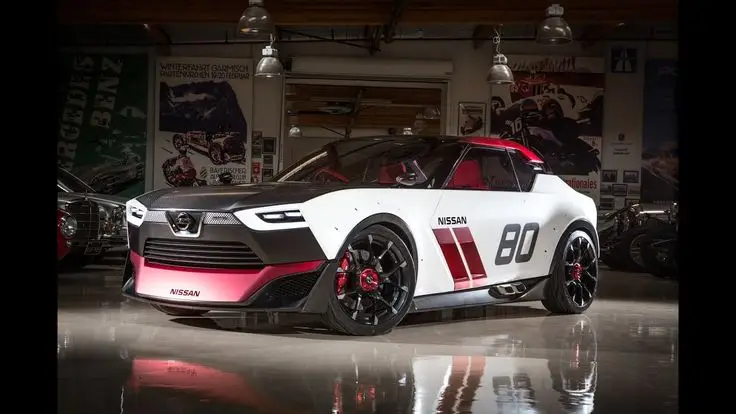
Despite strong public interest, the IDx Nismo never made it to production. Nissan had three specific reasons for shelving this promising project, disappointing many fans who eagerly awaited its release.
According to reports, one major obstacle was the lack of a suitable platform. An alleged Nissan engineer revealed that developing a new rear-wheel-drive platform exclusively for this model would have been too costly to justify.
The concept featured aggressive styling, racing-inspired elements, and a performance-oriented design that set it apart from other Nissan offerings. Its bold red accents and aerodynamic profile made it instantly recognizable.
Car enthusiasts still express disappointment about this concept’s demise. The IDx Nismo remains a significant “what could have been” moment in Nissan’s design history.
5) Lamborghini Estoque

The Lamborghini Estoque was a surprising concept car unveiled in 2008 that marked the Italian automaker’s bold venture into the four-door sedan market. Unlike Lamborghini’s traditional supercars, the Estoque offered practical luxury with its spacious interior and four full-sized seats.

Powered by the V10 engine from the Gallardo, the Estoque was originally expected to join Lamborghini’s lineup by 2012. The sleek design maintained the brand’s aggressive styling while adapting it to a longer wheelbase format.
The concept car enhanced the tradition of the brand with completely new versatility. It represented Lamborghini’s attempt to compete with other luxury sport sedans like the Porsche Panamera.
Despite positive reception, Lamborghini eventually shelved the Estoque project. The company released a statement indicating they had decided not to build the car, though they noted no final decision had been made regarding its production viability.
Some critics described it as Lamborghini’s answer to a question nobody asked – a supercar sedan that could rival the Panamera. The Estoque remains one of the most intriguing “what if” stories in Lamborghini’s history.
6) Ford X2000

The Ford X2000 stands as one of the most ambitious concept cars of the late 1950s. Created in 1957 by designers Alex Tremulis and Bill Balla, this futuristic vehicle was Ford’s vision of what cars might look like by the year 2000.
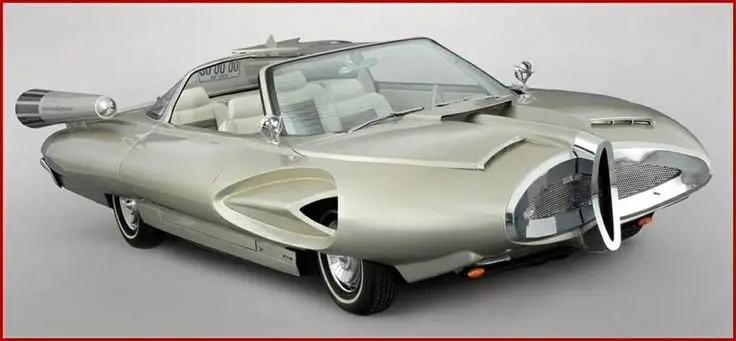
The X2000 featured a striking design that was far ahead of its time. Its sleek body included dramatic tailfins and a bubble-top canopy that gave it a spaceship-like appearance.
Interestingly, the original concept was only built as a 3/8 scale model. The full-sized versions seen in photographs were custom builds created later, based on the original design.
Ford executives apparently drew inspiration from comic books when conceiving the X2000. The Batman-influenced styling is evident in its dramatic lines and futuristic aesthetic.
Despite being considered possibly the best concept car of its era, the X2000 never made it to production. It remained a styling fantasy that captured the optimistic, space-age spirit of the late 1950s.
The X2000 continues to fascinate car enthusiasts and retro-futurism fans alike as a bold vision of automotive design that never came to be.
7) Cadillac Sixteen

The Cadillac Sixteen concept car made its spectacular debut in 2003, reviving the legacy of Cadillac’s historic V16 models from the 1930s. This modern interpretation captured the essence of American luxury while showcasing what could have been a new flagship for the brand.
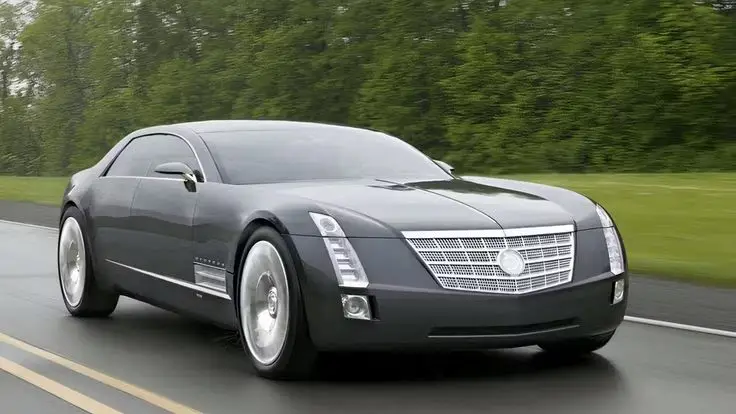
At the heart of this impressive vehicle was an enormous 13.6-liter aluminum V16 engine producing 1,000 horsepower. The power plant was surprisingly light despite its size and featured cylinder deactivation technology for improved efficiency when full power wasn’t needed.
The Sixteen’s design merged classic Cadillac styling with contemporary elements. Its massive hood, elegant proportions, and imposing presence embodied what many consider everything a Cadillac should be – luxurious and boldly American.
Inside, the Sixteen featured an interior that rivaled Bentley in quality, with handcrafted details and premium materials throughout. The cabin showcased Cadillac’s vision for ultra-luxury transportation.
While the Sixteen never reached production due to economic factors and changing market demands, it remains one of the most significant concept cars in Cadillac’s history. Its influence can be seen in subsequent Cadillac designs and it continues to represent what might have been.
8) Toyota GTV (Gas Turbine Vehicle)

The Toyota GTV (Gas Turbine Vehicle) was an innovative concept car unveiled at the Tokyo Motor Show in October 1987. It represented Toyota’s ambitious exploration into alternative propulsion systems beyond conventional piston engines.

What made the GTV special was its gas turbine engine, essentially putting jet engine technology into a road car. This concept was built on the platform of the contemporary Toyota Soarer, giving it a grand tourer appearance.
The GTV wasn’t Toyota’s first attempt at turbine technology. The company had previously developed the Sports 800 Gas-Turbine Hybrid in the 1970s, showing their long-term interest in this technology.
Despite its futuristic approach and sophisticated design, the GTV never proceeded to production. Toyota eventually terminated the gas turbine project after creating this grand tourer, joining other turbine-powered concepts that failed to reach commercial viability.
The GTV remains a fascinating example of automotive innovation and represents an alternate technological path that the industry considered but ultimately didn’t pursue.
9) Mercedes CLK GTR Prototype

The Mercedes CLK GTR was one of the most remarkable racing cars of the 1990s. Unlike many prototypes that never reach production, the CLK GTR actually did make it to market in limited numbers, with Mercedes producing just 25 examples in both coupe and convertible forms.
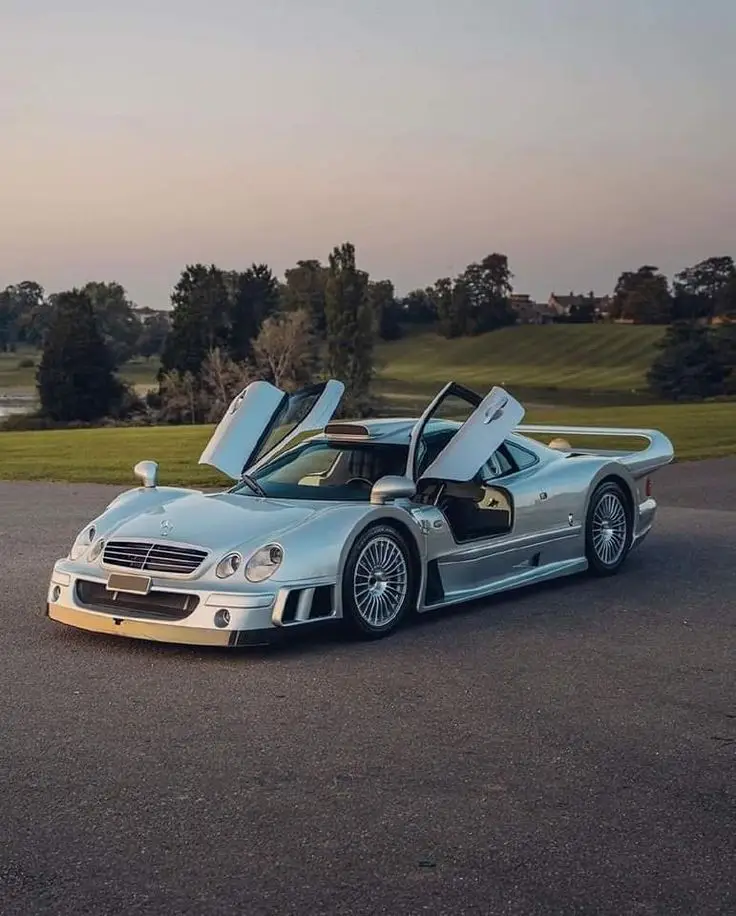
The original prototype was developed in an incredibly short timeframe. Mercedes-Benz and AMG built the CLK GTR racer in just six months before the 1997 racing season. This rapid development demonstrated Mercedes’ engineering prowess and commitment to competition.
The car featured an extreme design with low, wide proportions that bore little resemblance to the standard CLK. It was created specifically to compete in the FIA GT Championship, where regulations required manufacturers to build road-legal versions of their race cars.
The CLK GTR is often confused with the Mercedes-Benz CLR, a later racing model that became infamous for its aerodynamic issues at Le Mans. The GTR itself was a much more successful platform.
Many enthusiasts consider it one of Mercedes’ greatest achievements, with some calling it the “greatest Mercedes street car ever made”.
10) Buick Y-Job

The Buick Y-Job holds the distinction of being the world’s first concept car, making its debut in 1938. Designed by Harley Earl, this revolutionary prototype was never intended for mass production but rather served as a showcase for innovative designs and technologies.
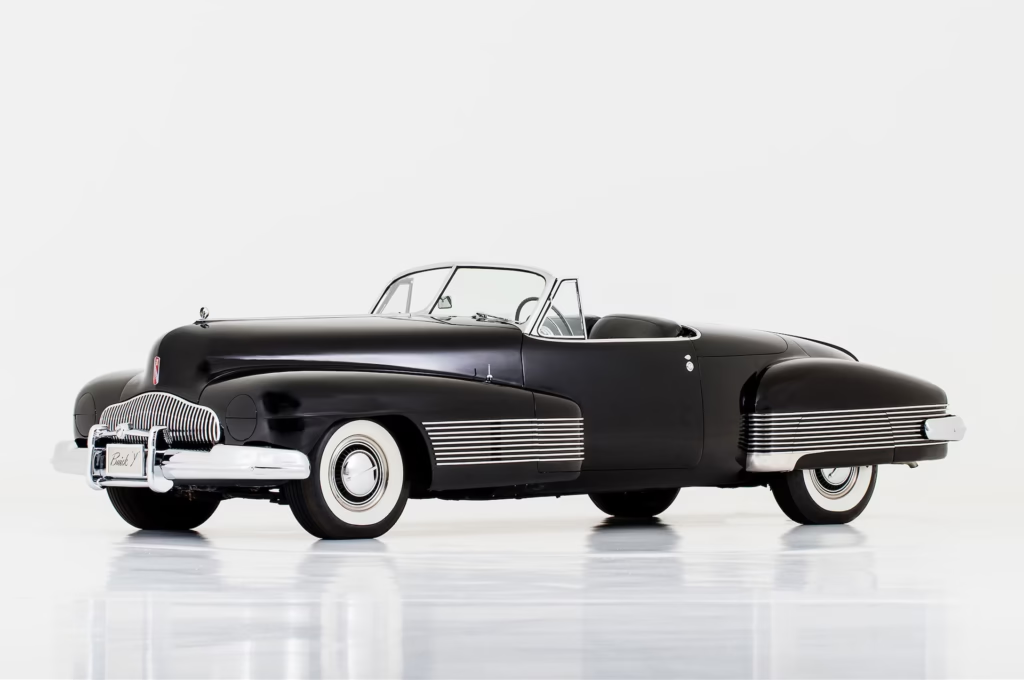
Earl created this groundbreaking vehicle after receiving a limited budget but with access to General Motors’ resources. The Y-Job featured numerous elements that were considered futuristic for its time, including hidden headlights and a distinctive streamlined appearance.
From bumper to bumper, the Y-Job was truly automotive sculpture rather than just transportation. Its sleek lines and forward-thinking design made it stand out dramatically on roads in the 1930s.
The Y-Job wasn’t just for show – Harley Earl actually drove it personally for many years. This demonstrated the concept’s practicality despite its experimental nature.
The impact of this vehicle on automotive design cannot be overstated. It established the concept car tradition that continues today, where manufacturers create visionary prototypes to test public reaction and showcase future design directions.
Engineering Challenges

Creating revolutionary car prototypes involves tackling significant technical hurdles and financial considerations that often prevent these innovative vehicles from reaching consumers.
Technological Limitations
Many concept cars showcase technology that simply isn’t ready for mass production. The 1987 Toyota GTV (Gas Turbine Vehicle) featured an actual jet engine under the hood, but the complexities of adapting turbine technology for everyday driving proved insurmountable.
Regulatory challenges also present major obstacles. Concept cars often lack the safety features required by law, and redesigning them to meet these standards can compromise their original vision.
Materials science frequently lags behind designers’ ambitions. Lightweight composites or experimental alloys shown in prototypes may be too difficult to manufacture at scale or might fail durability testing.
Battery technology has particularly limited electric concept cars. Many prototypes never reached production because battery systems couldn’t deliver the promised range or performance while meeting safety standards.
Cost Constraints
The financial reality of bringing concept cars to market often leads to their demise. Tooling costs for manufacturing unique components can reach millions of dollars, making economic viability questionable.
Development expenses multiply when engineers must solve problems that weren’t addressed in the concept phase. What looks impressive on a show floor often requires years of additional development to function reliably.
Market practicality ultimately determines a prototype’s fate. Manufacturers must believe they can sell enough units to recoup investment, and many intriguing prototypes simply don’t have broad enough appeal to justify production costs.
Some concepts, like several American designs that were too controversial, represented significant financial risks that companies weren’t willing to take during uncertain economic periods.
Impact on the Automotive Industry

Concept cars have shaped automotive design and technology even when they never reach production. They push boundaries, test new ideas, and create ripples that influence what we eventually see on roads.
Shifts in Design Philosophy
Concept cars often introduce bold design elements that change how manufacturers approach vehicle aesthetics. These prototypes allow designers to experiment without the constraints of immediate production feasibility.
The Alfa Romeo BAT series from the 1950s, with its dramatic aerodynamic features, influenced how carmakers thought about wind resistance for decades. Though never produced, these concepts changed how engineers approached vehicle shapes.
Similarly, the 1970 Mercedes C111 with its gullwing doors and mid-engine design shifted luxury car philosophy. Its DNA can be seen in many modern supercars.
Manufacturers often use concept vehicles to gauge public reaction to radical design changes. This feedback loop helps companies decide which elements might succeed commercially.
Influence on Future Technologies
Concept cars serve as technological testbeds where innovations can be showcased before they’re ready for mass production. Many features now standard began life in these one-off prototypes.
The 1980s Aston Martin Bulldog tested digital displays and computer-controlled systems decades before they became common. Its influence extended beyond the brand, affecting the entire industry’s approach to electronics.
Modern electric vehicle developments owe much to concepts like the 1990s GM Impact, which laid groundwork for production EVs years later. Though never manufactured as designed, its battery technology research proved invaluable.
Concept cars also function as regulatory proving grounds, where manufacturers can explore how future vehicles might meet changing safety and emissions standards without immediate production pressure.
Frequently Asked Questions

Concept cars reveal future possibilities and often spark debates about automotive innovation. Many prototypes with revolutionary designs or features remain locked in manufacturer archives instead of reaching consumers.
What are some iconic concept cars that were never mass-produced?
The Ford Indigo stands as one of the most striking concept cars never produced. This mid-1990s prototype featured a V12 engine and racing-inspired aerodynamics that captured enthusiasts’ imagination.
The Jaguar XJ13 represents a tragic “what could have been” story in automotive history. Built to compete at Le Mans, only one was ever made before the project was abandoned due to regulation changes.
The BMW (E46) M3 Touring combined performance with practicality. Despite strong enthusiast interest, BMW chose not to produce this wagon version of their iconic sports car.
How do innovations in concept cars impact future vehicle design?
Concept cars serve as laboratories for new design languages that often appear in production vehicles years later. Features first seen as “radical” in prototypes frequently become mainstream design elements.
Technological innovations tested in concepts filter down to production vehicles incrementally. The digital dashboards common today appeared in futuristic concept cars decades before becoming standard features.
Most concept cars are built as one-off prototypes specifically to test new ideas and gauge public reaction. This feedback helps manufacturers refine designs before committing to production models.
Why are certain high-performance prototype cars not released to the public?
Production feasibility often prevents exciting prototypes from reaching consumers. The Lamborghini Estoque sedan concept was technically viable but didn’t align with the brand’s sports car focus.
Safety and emissions regulations can halt production plans. Many high-performance concepts cannot meet stringent requirements without significant compromises to their original design.
Economic viability plays a critical role in production decisions. Limited market demand for specialized vehicles like the Nissan IDx Nismo makes mass production financially risky despite enthusiast appeal.
What happens to prototype cars after they are shown in auto shows and don’t go into production?
Most concept vehicles end up in manufacturer museums or private collections. These one-off creations become valuable artifacts representing automotive design history.
Some prototypes are dismantled to reuse valuable components or prevent design theft. Manufacturers often retain innovative mechanical or electronic systems for future development.
A small number of concept cars are sold to private collectors at premium prices. These rare transactions typically include strict agreements about how the vehicles can be used and displayed.
How do prototype car features influence the technology in commercially available vehicles?
Prototype technologies undergo extensive refinement before appearing in production vehicles. Features like gas turbine engines seen in concept cars may inspire more practical hybrid powertrains in production models.
Consumer feedback on concept features helps manufacturers prioritize innovations. Positive reactions to specific technologies can accelerate their implementation in production vehicles.
Concept cars allow companies to establish technological leadership positions. Showcasing advanced capabilities in prototypes builds brand reputation even when specific features aren’t immediately produced.
What economic factors lead to the discontinuation of a car model in its prototype stage?
Production costs often determine a prototype’s fate. Specialized materials and manufacturing processes showcased in concepts like the Nissan IDx Nismo can make mass production financially impractical.
Market timing significantly impacts production decisions. Economic downturns or shifting consumer preferences can cancel production plans for even the most promising prototypes.
Competition within manufacturer portfolios can doom certain concepts. The limited sports car market couldn’t support both existing models and new entries like the Ford Indigo simultaneously.
